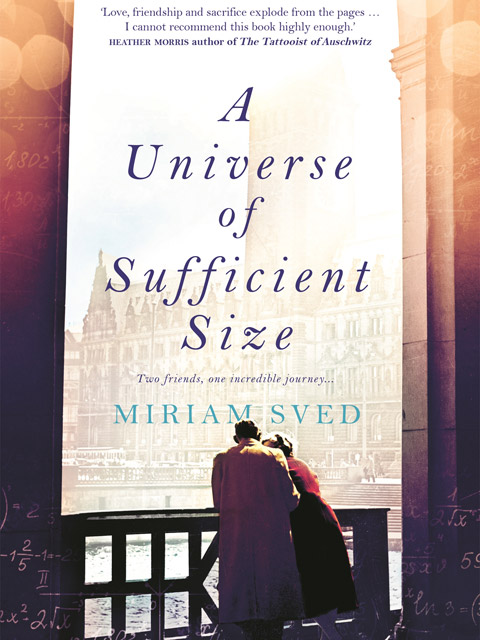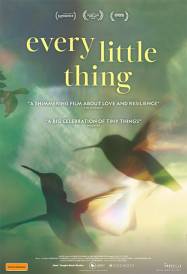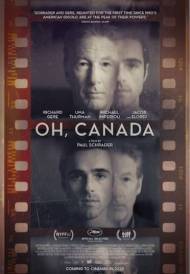A Universe Of Sufficient Size

Two Friends, One Incredible Journey...
I have wished so many times that I had acted differently.
I wish that I had been more worthy of you...
Eventually the war will end, and then we will find each other.
Until then, remember me.
Budapest, 1938. In a city park, five young Jewish mathematicians gather to share ideas, trade proofs and whisper sedition.
Sydney, 2007. Illy has just buried her father, a violent, unpredictable man whose bitterness she never understood. And now Illy's mother has gifted her a curious notebook, its pages a mix of personal story and mathematical discovery, recounted by a woman full of hopes and regrets.
Inspired by a true story, Miriam Sved's beautifully crafted novel charts a course through both the light and dark of human relationships: a vivid recreation of 1930s Hungary, a decades-old mystery locked in the story of one enduring friendship, a tribute to the selfless power of the heart.
Miriam Sved is a Melbourne-based writer whose debut novel, Game Day, was published by Picador in 2014. She has been a contributing editor on the feminist anthologies Mothers and Others and Just Between Us, and the upcoming #MeToo: Stories from the Australian movement. Her novella 'All the Things I Should've Given' was a winner of Griffith Review's 2018 Novella Project, and her short fiction has been published in Best Australian Stories, Meanjin, Overland and elsewhere. A Universe of Sufficient Size is her second novel.
A Universe Of Sufficient Size
Picador Australia
Author: Miriam Sved
ISBN: 9781743535127
RRP: $32.99
Interview with Miriam Sved
Question: What inspired you to write A Universe of Sufficient Size?
Miriam Sved: I've wanted to write this story since I was a teenager, when my grandmother started telling me stories about her life in Hungary before the war. You know when someone talks about people from their life and they seem so vivid and compelling that you want to get to know them yourself… I think the characters took root then, and they lurked around in corners of my mind – I'd think about them occasionally over the years.
But the story seemed too big and intimidating to write – I knew it would involve lots of research about Hungary, the pre-war and war years, and also maths (which was never my strong suit), so I let it lie for a long time.
Then after my first novel came out I had a conversation with my publisher in which she encouraged me to write something big and ambitious. And this story was there, as it had been for years, and it was like I finally had permission to write it.
Question: How much of the book is based on this true story?
Miriam Sved: My grandmother's story is definitely the springboard for the book. She was part of a group of young Jewish mathematicians who used to meet weekly at the statue of Anonymous in Budapest to discuss maths problems, the political situation and their personal lives. The way she talked about all three of those things – the mathematical, the political and the personal – inspired the story, as did some of her 'characters'.
She spoke a lot about the eccentric genius Paul ErdÅs, of whom everyone else in the group seemed a little in awe, but also protective and sometimes exasperated by – he was brilliant but also utterly hopeless: he couldn't tie his own shoes, and his mother buttered his bread.
Then there was my grandmother's best friend since high school, whom she called Epsz, who sounded like she was brilliant and beautiful.
There was the suggestion of a love triangle – or at least an admiration triangle – between Epsz, Paul ErdÅs, and another boy in the group called Gyu Szekeres.
Epsz brought the group a particular problem that sounded fascinating (even to me, as a complete maths dud), about whether you can find patterns within groupings that seem meaningless. Gyu Szekeres came up with a generalisation, partly as a way of 'winning' Epsz's hand – which seems to have worked; Epsz and Gyu got engaged and were married until their nineties (and they died on the same day as each other).
Paul ErdÅs started calling Epsz's problem the 'Happy Ending Problem'. But he and Gyu Szekeres went on to work on it without Epsz. The question of why she dropped away from the work niggled at me.
Ultimately the book diverges a lot from what happened in their lives, but this kind of personal/mathematical intrigue in the midst of intense political upheaval was definitely an inspiration.
The other thing that inspired me was the way my grandmother talked about that period in her life as a very happy time. Although she and my grandfather left Hungary in 1938, it wasn't because they had any inkling of what was coming – there were racial persecutions and employment laws that restricted their professional opportunities, but from the way she spoke about that time I was struck by the sense of people living their own golden age as everything crumbles around them. (And that seemed relevant to our world now, when in some ways it feels like everything is on the brink; it makes me wonder: how do any of us know when we're passing the tipping point?)
Question: There are several issues raised in this book. Was this deliberate or did the story evolve this way?
Miriam Sved: I think the issues really came out of the story rather than the other way around. I realised at some point that the underlying themes I was writing about mirrored that maths problem I kept coming back to, which is about finding order in chaos: the human need to order and structure the world around us; the world's pull towards chaos.
Chronologically it worked to set the contemporary sections in 2007, and that happened to be around the time when some important things were happening in the online world – the flourishing of social media; the first smart phones – and I realised that the 'quest' of the young contemporary character mirrored that quest for order in chaos, but in a completely different space. His outlook is bent towards the chaos of the internet, and much more individualistic – it's about self-emergence through that chaos. And Illy, the other contemporary character, is facing various personal issues in her family that make her confront her fear of losing her safe social order – her daughter's polyamory, the dissolution of her sense of her own marriage.
Polyamory was also something that I wanted to explore, because it's one of those things that calls into question what we take to be the established, 'natural' order of the world. And the other thing that emerged organically was a story about different kinds of love.
Question: Can you talk about the research you conducted prior to writing A Universe of Sufficient Size?
Miriam Sved: The research started off really wide and kind of random – I read everything I could about the historical figures who'd been in my grandmother's circle, the ones who survived the war and went on to build a public profile, like Paul ErdÅs and Gyu Szekeres, and I read and watched everything I could find about Hungary in the thirties. Then as I got a sense of the specifics I was writing about I started looking for details and colour from that immediate pre-war and war period in Budapest. I had an amazing resource in my grandmother's memoir, which she wrote in her eighties and called Two Lives and a Bonus (her 'two lives' being Hungary and Australia, and the 'bonus' being her retirement years).
I also tried to research a lot of maths. The lead me down many rabbit holes, but I was really lucky to have an uncle in Melbourne who's a mathematician – he was someone I could go to with leads and say, for instance, explain the Riemann hypothesis as though you're talking to a six-year-old. I also found some of Terence Tao's videos on YouTube really useful – some mathematicians can present ideas so beautifully that the technical details fall away and they seem more like metaphors.
Question: What do you hope readers take from A Universe of Sufficient Size?
Miriam Sved: Mostly I hope they enjoy it as a story – that they connect with the characters and feel that sense of investment in their lives that I love in fiction. And there are ideas bubbling beneath the story that I hope linger on some level.
Interview by Brooke Hunter
A Universe Of Sufficient Size
Picador Australia
Author: Miriam Sved
ISBN: 9781743535127
RRP: $32.99
MORE



